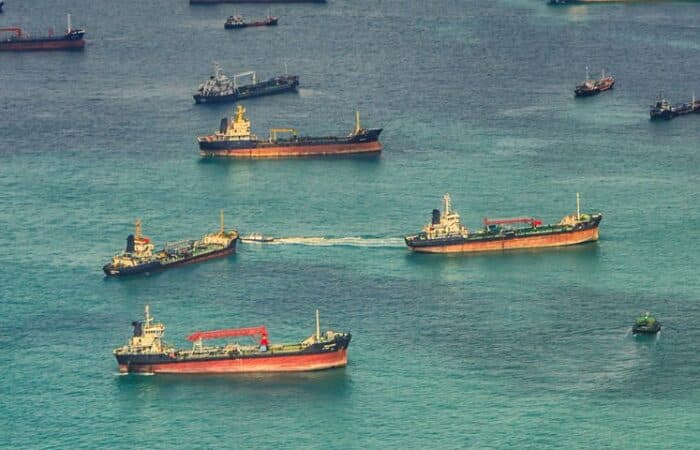Trade-Based Money Laundering
What is Trade-Based Money Laundering?
Trade-based money laundering (TBML) is a sophisticated method used by criminals to disguise illicit funds through legitimate international trade transactions. It involves manipulating the value, volume, or type of goods being traded to transfer value across borders without detection.
TBML schemes exploit vulnerabilities in trade finance systems, such as invoice manipulation, over- or under-invoicing, and multiple invoicing, to obscure the origins of illicit funds and integrate them into the global financial system. This method is particularly prevalent in industries with complex supply chains, such as the maritime sector, where large volumes of goods are traded across international borders.
What are the Key Concepts and Definitions of Trade-Based Money Laundering?
Like any criminal enterprise, TBML has its own terminology:
- Over/under-invoicing: the deliberate misrepresentation of the value of goods in trade transactions, with the aim of either inflating or deflating prices to move illicit funds across borders undetected.
- False documentation: the creation or alteration of trade documents, such as invoices, bills of lading, or customs declarations, to disguise the true nature or value of goods being traded and conceal the illicit origin of funds.
- Transfer pricing manipulation: manipulating the prices charged for goods or services transferred between related entities in different jurisdictions to artificially shift profits and move funds across borders without detection.
- Smurfing: breaking down large sums of illicit funds into smaller, less conspicuous transactions, which are then transferred through legitimate trade channels to evade detection by authorities.
- Shell companies: establishing fictitious companies, or using legitimate but dormant entities, to facilitate trade transactions and obscure the beneficial ownership of assets, making it difficult to trace the movement of illicit funds.

What are Some Red Flags Indicating Trade-Based Money Laundering?
TBML is difficult to detect, but there are red flags that could indicate this type of activity is underway. For example:
- Multiple invoicing: repeated invoicing of the same goods within a single trade transaction or the use of multiple invoices for a single shipment may suggest efforts to obscure the true nature of transactions.
- Unusual trade routes: shipping routes or destinations inconsistent with typical trade patterns, or industry norms, may indicate attempts to conceal the origin or destination of illicit funds.
- Mismatched trade descriptions: discrepancies between the description of goods on trade documents and their actual nature or quantity can be a sign of attempts to conceal the true identity of traded goods.
- High-risk industries or jurisdictions: trade transactions involving sectors known for money laundering risks or jurisdictions with weak regulatory oversight may raise suspicion.
- Unusual payment methods: the use of non-standard payment methods, such as third-party payments or cash transactions, could indicate efforts to disguise the source or destination of funds.
- Round-trip transactions: circular or round-trip transactions involving the same goods traded back and forth between related entities without clear economic justification may be indicative of laundering activities.
These red flags should prompt further investigation and due diligence to determine whether TBML activities are occurring.
What are Two Common Ways to Conduct Trade-Based Money Laundering?
In an over-invoicing scheme, criminals falsely overstate the value of goods on an invoice. By inflating the value of the goods sold on the invoice, they are able to move illicit funds disguised as payments for legitimate transactions across borders. For example, a criminal enterprise involved in human trafficking might also own a seemingly legitimate export business. They may ship a half container from Yemen to the United States and submit an invoice overstating the value of the shipment by $1 million. Once the money is paid in a legitimate transaction, the money from the human trafficking is clean and can be used for any purpose.
In a false documentation scheme (which includes over-invoicing), trade documents such as the bill of lading or shipping manifests misrepresent the quantity, quality, or value of goods sold. This allows them to obscure the transaction’s true nature and conceal the illicit funds’ origin. For example, a gang involved in the drug trade could fabricate shipping manifests to document transactions that never actually took place. This allows the drug trafficker to launder drug proceeds and add them to the formal economy without raising suspicion.
Why Does Trade-Based Money Laundering Introduce Risk to Shippers?
TBML poses significant risks to shippers, including:
- Reputational risk: shippers may unknowingly become involved in TBML schemes when their cargo is used to facilitate illicit trade transactions. If discovered, this association could tarnish the shipper’s reputation and credibility within the industry, leading to potential loss of business and trust among clients and partners.
- Legal and regulatory risk: shippers may face legal consequences if they are found to be complicit in TBML activities. In many jurisdictions, knowingly engaging in or facilitating money laundering activities is a criminal offense punishable by hefty fines, imprisonment, or seizure of assets. Shippers may also face regulatory sanctions or penalties for non-compliance with anti-money laundering (AML) and counter-terrorist financing (CTF) regulations.
- Financial risk: involvement in TBML schemes could result in financial losses for shippers, including legal fees associated with defending against allegations of complicity in money laundering activities. Additionally, shippers may incur costs related to investigations, compliance reviews, and potential fines or penalties imposed by regulatory authorities.
- Operational risk: TBML activities can disrupt normal business operations for shippers, leading to delays, increased scrutiny, and additional administrative burdens associated with compliance measures aimed at detecting and preventing money laundering. Heightened due diligence requirements may also strain resources and impede the efficiency of trade transactions.
Shippers may face sanctions for carrying a shipment that is involved in TBML. While shippers may not always be directly involved in the illicit activities associated with TBML, they can still be held liable for facilitating or enabling such activities through their transportation services. Sanctions can vary depending on the jurisdiction and the severity of the involvement, but they can include financial penalties, regulatory actions, and loss of business relationships.







